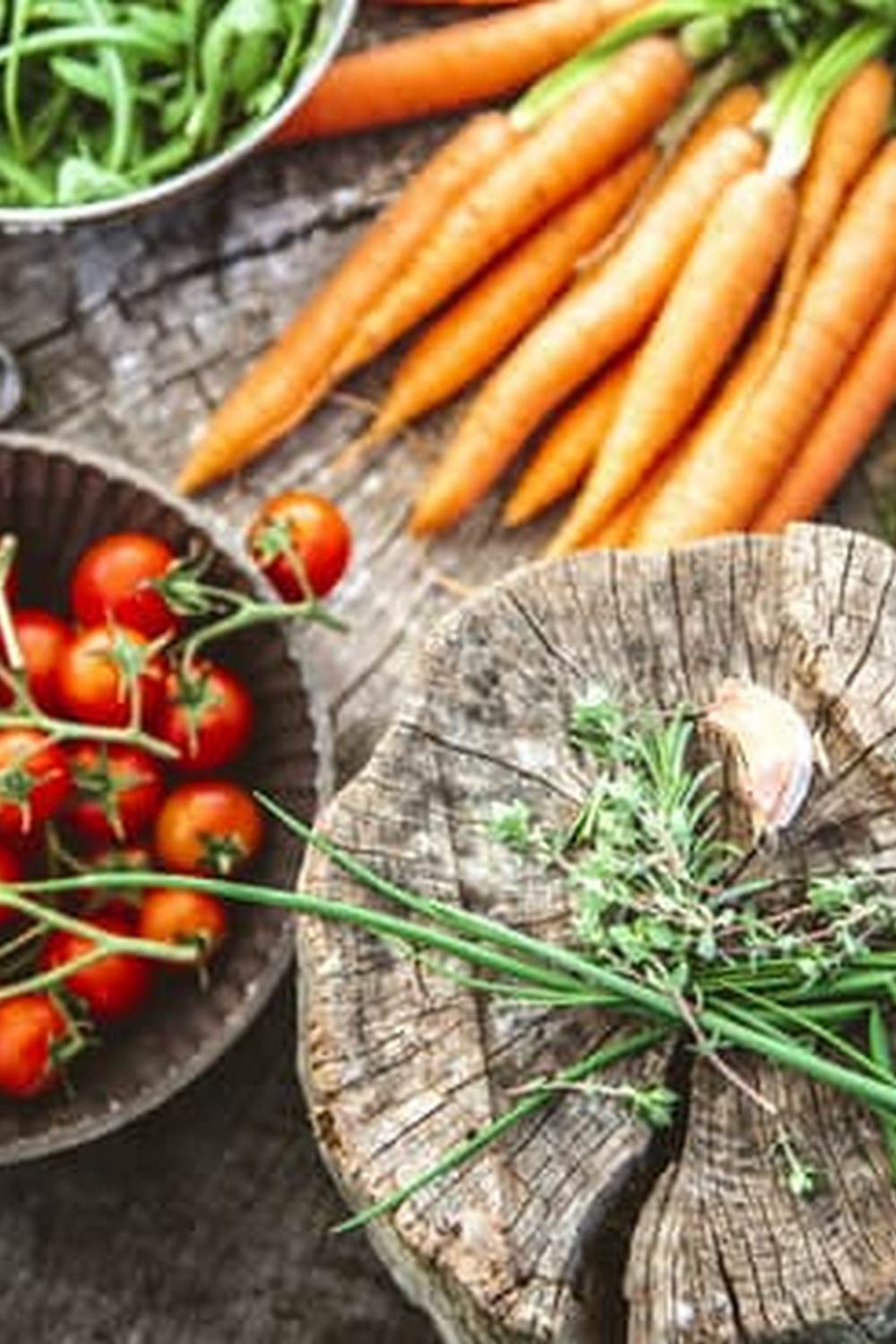Are you looking to bring the joys of gardening right to your doorstep? Terrace vegetable gardening ideas offer a fantastic solution for urban dwellers or those with limited outdoor space. By maximizing your terrace area, you can enjoy the benefits of fresh produce just steps away from your kitchen. Not only does terrace vegetable gardening promote sustainability and self-sufficiency, but it also allows you to have control over the quality and freshness of the fruits and vegetables you consume.
When it comes to setting up your terrace garden, choosing the right location is crucial. Adequate sunlight, access to water, and sufficient space are essential considerations for the success of your vegetable plants. Whether you have a spacious terrace or a small balcony, maximizing sunlight exposure will be key in ensuring healthy growth for your vegetables. With proper planning and organization, even the smallest spaces can be transformed into lush greenery teeming with colorful produce.
Container selection plays a significant role in terrace gardening success. From pots and planters to hanging baskets, there are various options available to suit different terraces and personal preferences. The right container will not only provide ample space for root growth but also enhance drainage and airflow necessary for healthy plants. By carefully selecting containers that complement your terrace design, you can create a visually appealing vegetable garden that adds beauty as well as functionality to your outdoor space.
Choosing the Right Location
When it comes to terrace vegetable gardening, choosing the right location is crucial for the success of your harvest. One of the most important factors to consider is sunlight. Vegetables typically require at least 6-8 hours of direct sunlight per day to thrive. Ensure that your terrace garden is placed in a spot that receives adequate sunlight, whether it is on a south-facing balcony or rooftop.
In addition to sunlight, access to water is another essential consideration when selecting a location for your terrace vegetable garden. Make sure that there is a convenient water source nearby or set up a watering system that can reach all your plants. Adequate hydration is key to the growth and development of your vegetables, so having easy access to water will make maintenance much easier.
Finally, space planning is vital when setting up a terrace vegetable garden. Consider the size and weight capacity of your terrace to determine how many containers you can place. Optimize the available space by utilizing vertical gardening techniques such as trellises or hanging systems. By maximizing space efficiency, you can grow a variety of vegetables even in a limited area on your terrace.
Utilizing Sunlight: Positioning Your Garden for Success
To maximize sunlight exposure for your terrace vegetable garden, position your containers in areas where they can receive direct sunlight for the longest period possible each day. Remember that the intensity and duration of sunlight may vary depending on the time of year, so be mindful of seasonal changes and adjust the placement of your plants accordingly.
Ensuring Water Access: Setting Up Efficient Irrigation Systems
Incorporate an efficient irrigation system into your terrace vegetable garden to ensure that your plants receive an adequate amount of water regularly. Consider using drip irrigation systems or self-watering containers to provide consistent moisture levels for optimal growth. Monitoring soil moisture levels and adjusting watering schedules as needed will help prevent under or over-watering issues.
Space Planning: Making the Most of Limited Space With Smart Layouts
When space is limited on your terrace, strategic layout planning can help you make the most out of every inch available. Arrange containers in a way that allows for proper air circulation and easy access for maintenance tasks like watering and harvesting. Vertical gardening solutions like using wall-mounted planters or tiered shelving can also help maximize growing area while adding visual interest to your terrace vegetable garden setup.
Container Selection
Types of Containers
There are various options available for containers in terrace vegetable gardening. Traditional clay or plastic pots are commonly used due to their affordability and availability in different sizes. Planters, both raised beds and troughs, provide a larger growing area suitable for multiple vegetables. Hanging baskets are ideal for trailing or vining plants like cherry tomatoes or herbs and can be hung from railings or ceilings.
Material Considerations
The material of the container plays a significant role in the overall health of your plants. Terracotta pots are breathable but can dry out quickly, while plastic containers retain moisture better but may not allow roots to breathe as well. Consider the climate in your area when choosing materials to ensure they can withstand temperature fluctuations.
Drainage Needs
Proper drainage is essential for terrace vegetable gardening to prevent waterlogging and root rot. Ensure that each container has drainage holes at the bottom to allow excess water to escape. Elevate pots on pot feet or bricks to facilitate drainage and prevent water from pooling around the roots of your plants.
By selecting the right containers for your terrace vegetable garden, you can create an optimal environment for your plants to thrive and produce bountiful harvests throughout the season. Consider the size, material, and drainage capabilities of each container to ensure successful growth of a variety of vegetables in your terrace garden setup.
Soil and Fertilizer
When it comes to terrace vegetable gardening, having the right soil mix is crucial for the success of your plants. A well-draining soil that is rich in nutrients will provide a healthy environment for your vegetables to thrive. Consider using a mix of garden soil, compost, and perlite or vermiculite to ensure good drainage while also retaining moisture. This will help prevent waterlogged roots and ensure that your plants receive the necessary nutrients they need to grow.
Fertilizing your terrace vegetable garden is another important aspect to keep in mind. Organic fertilizers are often preferred as they are gentle on the plants and promote long-term soil health. Consider using compost tea, fish emulsion, or seaweed-based fertilizers to provide essential nutrients without the risk of burning your plants from excess chemicals. It’s essential to follow the instructions on the fertilizer packaging carefully to avoid overfeeding your vegetables.
In addition to soil and fertilizer, ensuring proper drainage in your containers is vital for preventing waterlogged roots and root rot. Make sure that your pots have drainage holes at the bottom to allow excess water to escape freely.
Elevating containers slightly off the ground can also help improve drainage. By paying attention to these key aspects of soil quality, fertilizer application, and drainage, you can set up your terrace vegetable garden for success and enjoy a bountiful harvest of fresh produce.
| Aspect | Important Points |
|---|---|
| Soil Mix | Use garden soil, compost, perlite or vermiculite for good drainage |
| Fertilizing | Consider organic options like compost tea or fish emulsion for healthy growth |
| Drainage | Ensure containers have adequate drainage holes and are slightly elevated |
Choosing the Right Vegetables
When it comes to terrace vegetable gardening, choosing the right vegetables is essential to ensure a successful harvest. The limited space available on a terrace means that selecting crops that thrive in containers and smaller spaces is key. Here are some of the best vegetables to grow in a terrace garden:
- Tomatoes: Tomatoes are one of the most popular vegetables to grow in containers. They come in various sizes, from cherry tomatoes to beefsteak varieties, making them versatile for different terraces. Ensure they receive plenty of sunlight and support them with stakes or cages as they grow.
- Peppers: Peppers, whether sweet or hot varieties, can also thrive in container gardens. Choose compact varieties like bell peppers or jalapeños and provide ample sunlight and consistent watering for healthy growth.
- Herbs: Herbs are perfect for terrace gardening due to their compact size and ability to thrive in smaller pots. Basil, mint, parsley, and cilantro are just a few examples of herbs that can be easily grown on a terrace and used fresh in cooking.
- Leafy Greens: Leafy greens such as lettuce, spinach, kale, and arugula are ideal choices for terrace vegetable gardening. They have shallow root systems and can be harvested multiple times throughout the season for fresh salads.
By selecting the right vegetables for your terrace garden based on your preferences and available space, you can enjoy a bountiful harvest of homegrown produce throughout the growing season. Experiment with different varieties each year to discover which plants thrive best in your specific terrace environment. With proper care and attention, you’ll soon be enjoying delicious meals made with fresh ingredients grown just outside your door.
Maintenance Tips
Maintaining a terrace vegetable garden involves several important tasks to ensure a successful harvest of fresh produce. Proper watering is essential to the health of your plants, especially during hot weather or in containers where moisture can evaporate quickly. It is crucial to water consistently, making sure that the soil is moist but not waterlogged. One tip is to water in the early morning or evening to reduce evaporation and allow plants to absorb water more effectively.
In addition to watering, pruning is another key aspect of maintaining your terrace vegetable garden. Regularly trimming dead or damaged leaves, stems, and flowers encourages healthy growth and prevents diseases from spreading. Pruning also helps improve air circulation among plants, reducing the risk of fungal infections. When pruning, make clean cuts using sharp tools to minimize stress on the plant.
Weeding is another maintenance task that cannot be overlooked in terrace vegetable gardening. Weeds compete with your vegetables for nutrients and sunlight, so it’s essential to regularly remove them before they take over. Hand weeding or using mulch can help keep weeds at bay while also improving the overall appearance of your garden. Additionally, keeping the area around your containers free from debris will reduce hiding spots for pests that may damage your plants.
| Maintenance Tips | Key Points |
|---|---|
| Watering | Consistent watering in early morning or evening; avoid waterlogging |
| Pruning | Regularly trim dead/damaged parts; use sharp tools for clean cuts |
| Weeding | Remove weeds regularly; consider hand weeding or using mulch |
Pest control is also a crucial aspect of maintaining a healthy terrace vegetable garden. Keep an eye out for common pests like aphids, caterpillars, and beetles that can damage your plants. Natural remedies such as insecticidal soap, neem oil, or introducing beneficial insects like ladybugs can help control pest populations without harming the environment or beneficial insects. Regular inspection of your plants can help you catch pest problems early and take action before they become a major issue.
By following these maintenance tips for your terrace vegetable garden – from proper watering and pruning to effective weeding and pest control – you can enjoy a bountiful harvest of homegrown vegetables throughout the growing season. Taking care of your plants with attention to detail will not only result in healthier produce but also provide you with an enjoyable gardening experience all year round.
Vertical Gardening Techniques
When it comes to terrace vegetable gardening ideas, vertical gardening techniques can be a game-changer. By utilizing vertical space, you can maximize your terrace’s potential and grow even more fresh produce. One popular method is using trellises, which provide support for vining plants like cucumbers, beans, and peas. Not only do trellises help save space, but they also improve air circulation around the plants, reducing the risk of pests and diseases.
Another great option for terrace vegetable gardening is vertical planters. These innovative containers allow you to stack multiple levels of plants vertically, making efficient use of limited space. Vertical planters come in various shapes and sizes, offering flexibility in design and plant selection. You can grow a variety of vegetables, herbs, and flowers in these tiered planters, creating a beautiful and functional green oasis on your terrace.
Hanging systems are also a fantastic way to add more greenery to your terrace while keeping the ground clear for walking or seating areas. You can hang individual pots or create cascading arrangements using baskets or crates. Hanging systems work well for trailing plants like cherry tomatoes or strawberries.
They not only provide visual interest but also make harvesting easier since the fruits are at eye level. Additionally, hanging systems can be easily moved around to optimize sunlight exposure throughout the day. With these vertical gardening techniques, you can transform your terrace into a thriving vegetable garden full of fresh flavors and vibrant colors.
Harvesting and Enjoying Your Produce
Terrace vegetable gardening is not only a rewarding hobby but also a practical way to enjoy fresh produce right at your doorstep. By growing your own vegetables, you not only ensure their freshness and quality but also have the satisfaction of being involved in the entire process from seed to plate. With the right terrace vegetable gardening ideas, you can turn even a small outdoor space into a productive garden full of delicious and nutritious veggies.
When it comes to harvesting your homegrown produce, timing is key. Each type of vegetable has its own optimal harvesting period, ensuring that you get the best flavor and texture from your crops. From ripe tomatoes bursting with sweetness to crisp lettuce leaves ready for salads, knowing when to harvest each vegetable can make a significant difference in taste. Additionally, proper harvesting techniques help promote continued growth and production throughout the season.
Once you’ve harvested your vegetables, the next step is enjoying them in mouthwatering dishes that truly highlight their freshness and flavor. From simple salads made with homegrown greens to flavorful stir-fries packed with freshly picked peppers and herbs, you can savor the fruits of your labor in countless ways.
Experimenting with different recipes allows you to fully appreciate the unique taste of each vegetable and make the most out of your terrace garden bounty. So roll up your sleeves, gather your harvest, and let your creativity shine in the kitchen as you prepare wholesome meals using your own homegrown ingredients.
Frequently Asked Questions
What Vegetables Are Good for Terrace Garden?
Many vegetables thrive in a terrace garden, such as tomatoes, peppers, cucumbers, and herbs like basil and mint. These plants are generally easy to grow and do well in containers or raised beds. Proper drainage and adequate sunlight are crucial for their success.
What Vegetables Grow Best in Balcony Pots?
When it comes to growing vegetables in balcony pots, consider options like lettuce, radishes, carrots, and green onions. These plants are compact and do not require a lot of space to thrive. Make sure to choose pots with proper drainage holes and use good quality potting soil for optimal growth.
How Do You Make a Simple Terrace Garden?
Creating a simple terrace garden involves a few key steps. First, assess the amount of sunlight your terrace receives to determine suitable plants. Next, choose containers or raised beds that provide enough space for root growth. Use high-quality soil and ensure proper drainage to prevent waterlogging. Regular watering and fertilization will help your plants grow successfully on the terrace.

If you’re looking to get into vegetable gardening, or are just looking for some tips on how to make your current garden better, then you’ve come to the right place! My name is Ethel and I have been gardening for years. In this blog, I’m going to share with you some of my best tips on how to create a successful vegetable garden.





